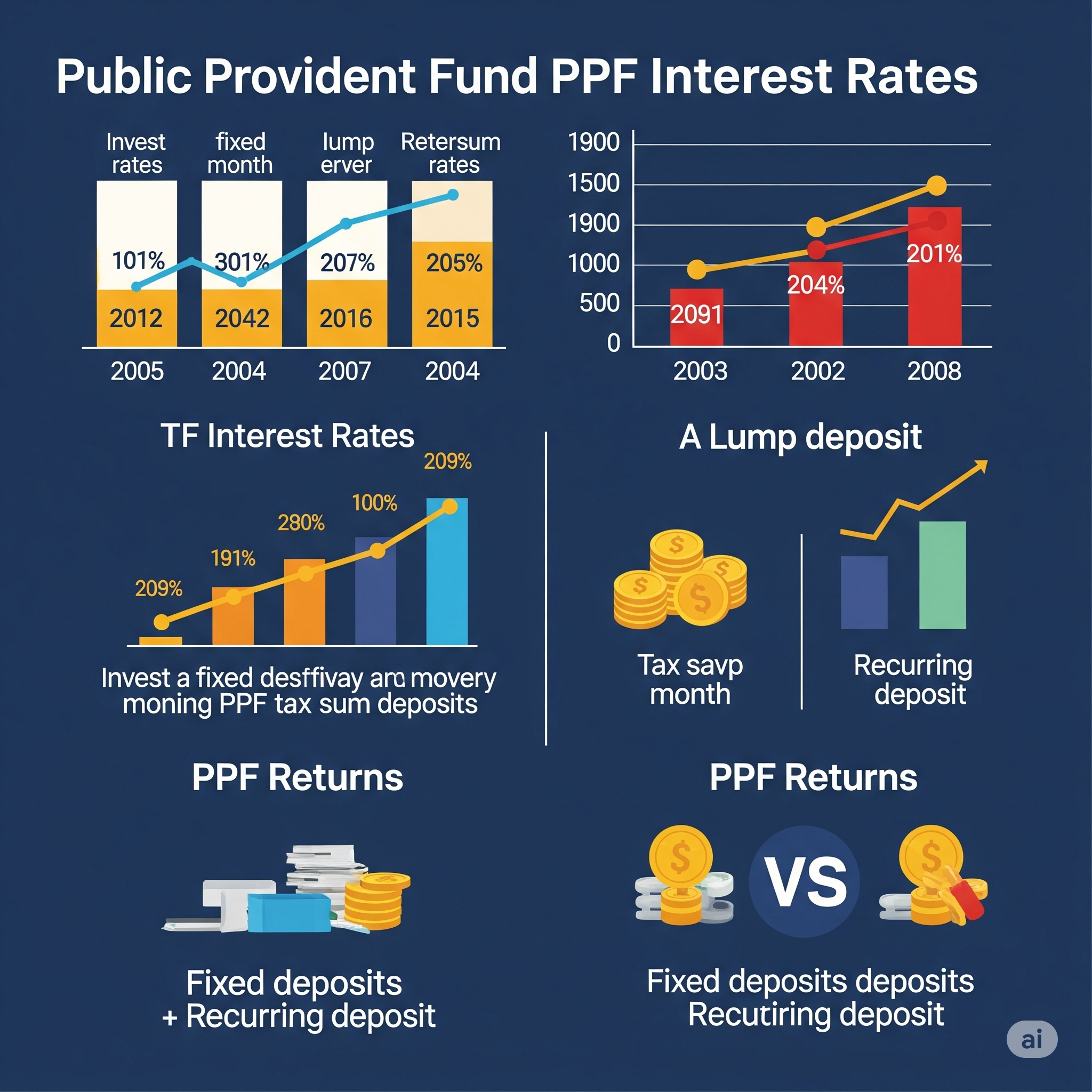In the Indian investment landscape, understanding the Compound Annual Growth Rate (CAGR) is crucial for investors looking to make informed decisions about their portfolios and financial futures.
CAGR represents the rate of return that an investment would need to have every year to grow from its beginning balance to its ending balance, over a given time interval.

The CAGR assumes that any profits were reinvested at the end of each period of the investment’s life span, making it a critical financial metric for evaluating investment performance in India’s growing financial markets.
By understanding CAGR, Indian investors can better assess the growth of their investments over time.
Key Takeaways
- Understanding CAGR is essential for Indian investors to make informed investment decisions.
- CAGR measures the mean annual growth rate of investments over periods longer than one year.
- It differs from simple annual returns by accounting for the compounding effect.
- CAGR is a critical tool for evaluating investment performance in India’s financial markets.
- It helps investors assess the growth of their investments over time.
What is CAGR Meaning?

In the realm of Indian finance, CAGR stands out as a pivotal metric for evaluating investment performance over time. CAGR, or Compound Annual Growth Rate, represents the average annual growth rate of an investment over a period exceeding one year.
Definition and Basic Concept
CAGR is considered one of the most reliable methods for calculating and analyzing returns on individual assets or investment portfolios. It smooths out the volatile nature of year-by-year growth rates, providing a clearer picture of an investment’s performance over time. This makes it particularly relevant for Indian investors with long-term financial goals.
The basic concept of CAGR is straightforward: it provides a single growth rate figure that Indian investors can easily understand and use for comparison. By smoothing out year-to-year fluctuations, CAGR offers a more accurate representation of investment performance than simple average returns.
The Mathematics Behind CAGR
The CAGR formula accounts for the compounding effect, where returns from previous periods contribute to future growth. The calculation assumes that profits are reinvested at the end of each period, aligning with many Indian investment strategies, particularly in mutual funds and systematic investment plans.
Understanding CAGR is crucial for Indian investors navigating the country’s diverse and evolving financial markets. It provides a standardized measure to compare the growth of different investments over time, helping investors make informed decisions about their financial portfolios.
By grasping the concept of CAGR and its application, Indian investors can better evaluate the performance of their investments and plan for their financial future with greater precision.
The Importance of CAGR in Investment Analysis
In the Indian investment landscape, CAGR stands out as a crucial metric for evaluating investment performance over time. It provides a clear picture of an investment’s growth trajectory by smoothing out annual returns.
CAGR is particularly important for Indian investors as it allows them to compare different investment options across various asset classes, such as equity, debt, real estate, and gold. This comparison is vital in making informed decisions about future investments.
Why CAGR Matters for Indian Investors
For Indian investors, CAGR serves as a standardized metric to evaluate the historical performance of their investments. It helps in benchmarking investment returns against relevant market indices like Sensex and Nifty, providing context for individual investment value over a specific period.
CAGR also assists Indian investors in setting realistic expectations for long-term financial goals, such as retirement planning, children’s education, and home purchases. By understanding the growth rate of their investments, investors can make more informed decisions.
CAGR as a Decision-Making Tool
CAGR is used by financial advisors and wealth managers in India to communicate investment performance to clients, making it an essential metric for financial literacy. It helps investors understand the power of compounding in wealth creation, a concept particularly relevant in India’s growing economy.
By utilizing CAGR, Indian investors can gain a clearer understanding of their investment performance and make more informed decisions about their financial future.
How to Calculate CAGR: The Formula Explained

To make informed investment decisions, Indian investors need to grasp the concept of CAGR and how to calculate it. The Compound Annual Growth Rate (CAGR) is a useful measure for evaluating the performance of an investment over a specific period.
Breaking Down the CAGR Formula
The CAGR formula is given by: CAGR = ((Ending Value/Beginning Value)^(1/Number of Years) -1)*100. This formula helps in understanding the rate of return of an investment.
The Beginning Value is the initial amount invested, while the Ending Value is the final amount after a certain period. The Number of Years refers to the total duration for which the investment is held.
CAGR Calculation Tools for Indian Investors
Indian investors can use various online tools and financial calculators to compute CAGR. These tools simplify the calculation process, allowing investors to quickly assess their investment’s performance.
For instance, using Excel, investors can calculate CAGR by applying the formula: =((Ending Value/Beginning Value)^(1/Number Years))-1. This method is particularly useful for those familiar with spreadsheet applications.
It’s also important for investors to be aware of common mistakes when calculating CAGR, such as incorrectly determining the number of years or misinterpreting the beginning and ending values.
By understanding and applying the CAGR formula correctly, Indian investors can make more informed decisions about their investments, whether in fixed deposits, mutual funds, or stocks.
CAGR Calculation Examples for Indian Investors
For Indian investors, calculating CAGR is essential to assess the growth of their investments over time. This metric provides a clear picture of how their investments have performed, helping them make informed decisions.
Real-World CAGR Applications in India
Let’s consider a few examples to understand how CAGR works in real-world investment scenarios in India. For instance, if an investor puts Rs.1,00,000 into a prominent Indian company’s stocks and it grows to Rs.2,00,000 over 5 years, the CAGR would be around 14.87%. This example illustrates how CAGR can be used to evaluate the performance of equity investments.
Indian investors can apply CAGR to various investment options to compare their performance. For example, consider Ram, who invested Rs.5,000 in a mutual fund in 2021, and its value grew to Rs.6,500 by 2024. The CAGR of this investment would be 9.10%. Similarly, CAGR can be calculated for fixed deposits in Indian banks, real estate investments in major Indian cities, and SIPs in Indian mutual funds.
By comparing the CAGR of different asset classes over similar periods, Indian investors can gain insights into which investments have performed better. This helps in making more informed investment decisions and optimizing their investment portfolios for better returns.
CAGR in Indian Mutual Funds

For Indian investors, CAGR is a vital metric for comparing the performance of various mutual fund schemes. It helps in understanding how well a mutual fund has performed over a specific period, smoothing out the effects of volatility.
Evaluating Mutual Fund Performance Using CAGR
Indian mutual fund companies typically report CAGR figures for different time periods, such as 1-year, 3-year, 5-year, and since inception. This helps investors understand the fund’s performance over various market cycles.
CAGR is particularly useful for comparing the performance of different categories of mutual funds, including equity funds, debt funds, hybrid funds, and sector-specific funds. For instance, an equity fund’s CAGR can be compared against benchmarks like the Nifty 50 or Sensex to gauge its relative performance.
Top-Performing Mutual Funds by CAGR in India
Some of the top-performing mutual funds in India have shown impressive CAGR figures over the long term. For example, certain equity funds have delivered CAGRs of over 15% in the past 5 years, outperforming the broader market indices.
Systematic Investment Plans (SIPs) in mutual funds benefit significantly from the compounding effect measured by CAGR, making them a popular choice among retail investors. Moreover, CAGR helps in evaluating the performance and consistency of fund managers, which is crucial in the Indian mutual fund industry where fund manager changes can impact returns.
By understanding CAGR, Indian investors can make more informed decisions about their mutual fund investments, aligning their choices with their financial goals and risk tolerance.
CAGR in the Indian Stock Market

The CAGR is a vital tool for analyzing the historical performance of stocks and market indices in India. It provides investors with a clear picture of how their investments have grown over time, smoothing out the volatility that can obscure long-term trends.
Historical CAGR of Major Indian Indices
The historical CAGR of major Indian indices such as the Sensex and Nifty offers valuable insights into the overall market performance. For instance, examining the CAGR of these indices over different time periods (5-year, 10-year, 15-year, and since inception) helps investors understand the growth trajectory of the Indian stock market.
Sector-wise CAGR Analysis in India
Sector-wise CAGR analysis reveals which sectors have delivered the strongest and weakest growth over various time periods. This information is crucial for investors looking to identify potential multibagger stocks—companies that have delivered exceptional returns over extended periods.
Market cycles significantly impact CAGR calculations, and the choice of start and end dates can substantially affect the results. Professional equity analysts in India use CAGR to forecast future stock performance and set target prices for Indian companies, making it an indispensable tool in investment analysis.
CAGR vs. Other Financial Metrics in India
When evaluating investments in India, understanding the various financial metrics is crucial for making informed decisions. Compound Annual Growth Rate (CAGR) is a widely used metric, but it’s essential to compare it with other financial metrics to get a comprehensive view of investment performance.
CAGR Compared to Absolute Returns
CAGR and absolute returns are two different ways to measure investment performance. Absolute returns calculate the total return over a period, without considering the time factor. In contrast, CAGR provides the rate of return over a specified period, taking into account the compounding effect. For instance, an investment with an absolute return of 50% over 5 years may seem less attractive than one with a 50% return over 3 years when evaluated using CAGR.
Different metrics serve different purposes. CAGR is useful for evaluating long-term growth, while absolute returns are more suitable for short-term investments. Indian investors should consider their investment goals and time horizons when choosing between these metrics. For investments with irregular cash flows, such as real estate, Internal Rate of Return (IRR) might be more appropriate. Additionally, risk-adjusted metrics like Sharpe Ratio and Sortino Ratio provide insights into the risk associated with investments, helping investors make more informed decisions.
By understanding the strengths and limitations of each metric, Indian investors can make more informed decisions and achieve their financial goals.
Using CAGR for Financial Planning in India

Financial planning in India can be made more effective by leveraging the power of CAGR. Indian investors can use this metric to project the future value of their investments and make informed decisions.
Retirement Planning with CAGR
One of the critical applications of CAGR is in retirement planning. By calculating the required rate of return, Indian investors can determine how much they need to save regularly to achieve their retirement goals.
For instance, if an investor aims to create a retirement corpus of ₹1 crore in 20 years and currently has ₹20 lakhs, they can use CAGR to calculate the necessary annual returns to reach this goal.
Education and Other Financial Goals
CAGR is also useful for planning other financial goals, such as children’s education or buying a home. For example, with the rising cost of education in India, parents can use CAGR to determine how much they need to invest today to fund their child’s future educational expenses.
By understanding the growth rate required for their investments to meet these goals, Indian investors can make more informed decisions about their portfolio and savings strategies.
By applying CAGR in financial planning, Indian investors can better navigate the complexities of the Indian financial landscape and make more informed investment decisions.
What is a Good CAGR in the Indian Context?
The concept of a good CAGR in India is influenced by several factors, including the type of investment, market conditions, and personal financial goals. Indian investors need to understand these factors to make informed decisions.
Different asset classes in India, such as equity, debt, gold, and real estate, have varying CAGR benchmarks. Historically, equity investments have offered higher CAGR compared to debt instruments, but they also come with higher risks.
Benchmarking CAGR Across Asset Classes
To evaluate CAGR effectively, it’s essential to benchmark it across different asset classes. For instance, large-cap companies in India typically have a CAGR in sales ranging from 5% to 12%, while small-cap and mid-cap companies can have a CAGR of 15% to 30%. Startup companies, on the other hand, are expected to have much higher CAGR, often between 100% to 500%.
Indian investors should have realistic CAGR expectations based on their investment choices. For mutual funds, large-cap funds typically offer a CAGR between 8% to 12%, while mid-cap and small-cap funds can offer higher CAGR, sometimes exceeding 15%. For fixed-income instruments like corporate fixed deposits and government bonds, CAGR expectations are generally lower, typically ranging from 6% to 9%.
It’s also crucial to consider India’s inflation rates when evaluating CAGR. Historically, India’s inflation rates have been higher than those in developed markets, which affects the real returns on investments. Therefore, investors should aim for a CAGR that not only meets but exceeds the inflation rate to ensure real growth in their portfolio.
Limitations of CAGR for Indian Investors
The Compound Annual Growth Rate (CAGR) is a widely used metric, but it has significant limitations for Indian investors. While it provides a smoothed rate of growth over a specified period, it fails to account for several critical factors.
Understanding CAGR’s Shortcomings
CAGR’s primary limitation is that it ignores volatility, implying steady growth over the investment period. However, returns on investments are typically uneven, except for bonds held to maturity and similar investments. This smoothing effect can be particularly misleading in India’s sometimes turbulent markets, potentially giving investors a false sense of stability.
To get a more comprehensive view, Indian investors should consider metrics that complement CAGR. These include:
- Standard deviation to understand volatility
- Internal Rate of Return (IRR) to account for the timing of cash flows, especially for Systematic Investment Plans (SIPs)
- Risk-adjusted returns to reflect investment risk, crucial in India’s diverse market
By using these metrics alongside CAGR, Indian investors can make more informed decisions, taking into account the complexities of their investment portfolio over time.
Advanced CAGR Applications in Indian Business Analysis

The application of CAGR in Indian business analysis extends beyond basic investment evaluation. It is a versatile metric used to assess various aspects of corporate performance.
CAGR for Corporate Performance Evaluation
Indian companies utilize CAGR to evaluate their performance across different business measures. For instance, CAGR can be used to analyze revenue growth, profit growth, market share expansion, and customer base growth.
By comparing the CAGRs of different measures within a company, businesses can identify strengths and weaknesses. For example, a company might have a high revenue CAGR but a lower customer satisfaction CAGR, indicating areas for improvement.
Industry-Specific CAGR Benchmarks in India
Different industries in India have varying growth benchmarks. For instance, the IT sector might have higher CAGR benchmarks compared to traditional manufacturing sectors.
Understanding these industry-specific benchmarks is crucial for companies to gauge their performance relative to their peers.
Indian equity analysts also use CAGR projections to value companies and set target prices, particularly in fast-growing sectors like IT, pharmaceuticals, and consumer goods.
CAGR analysis of economic indicators provides insights into India’s macroeconomic trends, helping investors identify promising sectors for investment.
Conclusion
In the Indian investment landscape, CAGR serves as a powerful tool for assessing the growth trajectory of various investment options.
Indian investors can use CAGR to evaluate investment performance, compare different options, and plan for financial goals. It’s crucial to use consistent time periods when making comparisons.
While CAGR provides valuable insights into growth, it doesn’t account for volatility or risk. Therefore, investors should use it alongside other metrics for informed decisions. By understanding CAGR and its limitations, Indian investors can make more informed investment choices, potentially improving their long-term financial outcomes.
Next Steps in Your Investment Journey
To apply CAGR effectively, investors should explore various investment options, such as mutual funds and savings schemes, and align their portfolio with their financial goals and risk tolerance.









